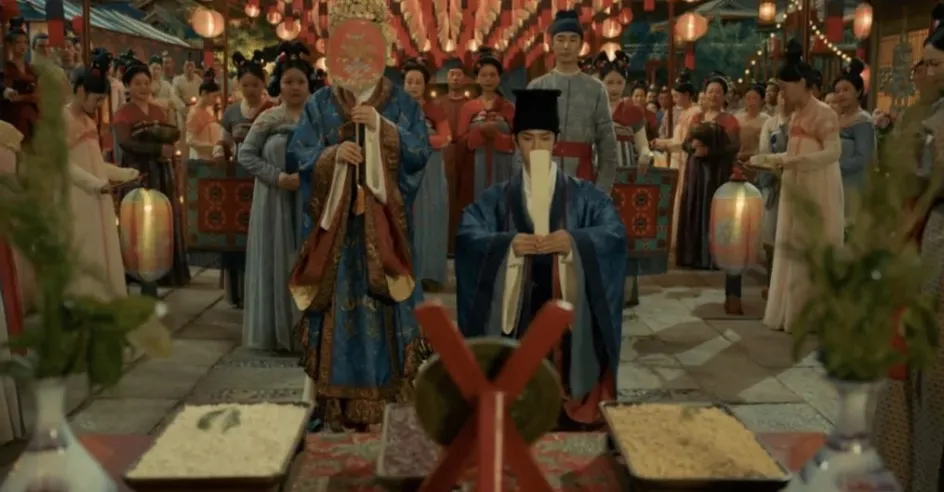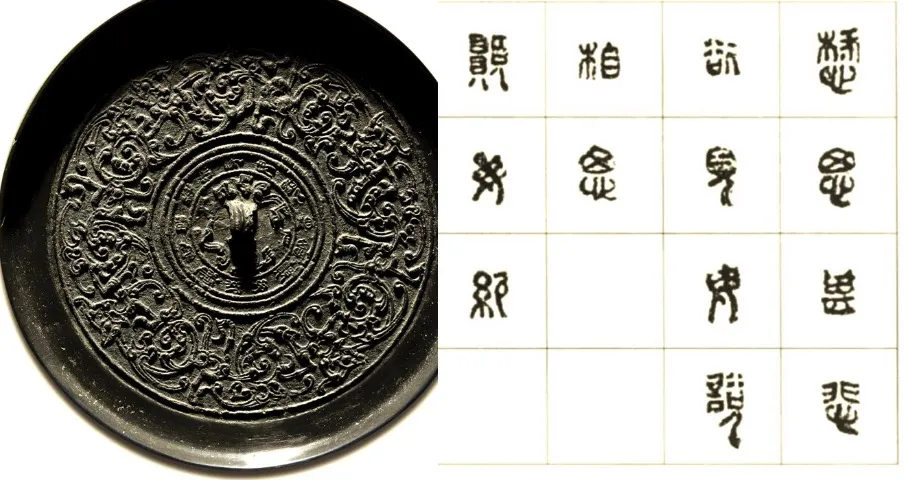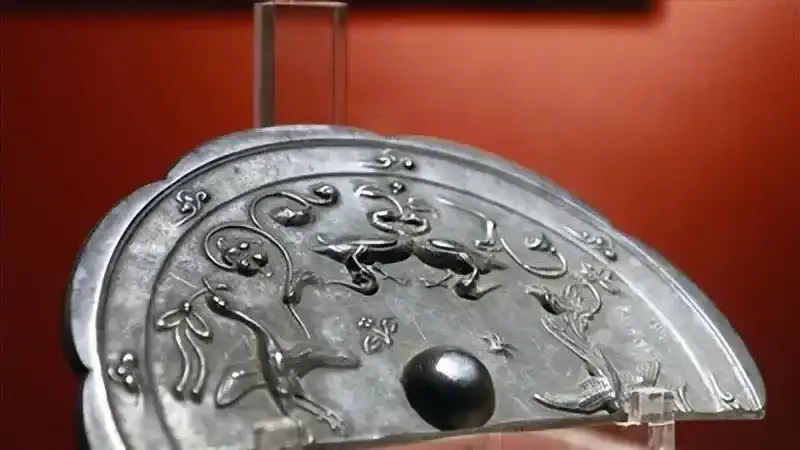In cdramas, such as The Gorgeous Princess, The Demon Exorcist, and Wind Blows in Luoyang, during the Tang - style wedding ceremonies, the newlyweds bow to a mirror instead of their parents. What's the story behind this? First, let's get to the conclusion. 'Bowing to the mirror' was an old wedding custom in the Tang and Song dynasties, used to ward off evil spirits, pray for blessings, and encourage self - reflection. Since the Han Dynasty, mirrors have been one of the betrothal gifts and marriage tokens.
At that time, mirrors were also called 'yang sui'. They could get fire from the sun, symbolizing brightness and beauty, and might be the prototype of early wedding mirrors. Newlyweds used bronze mirrors to ward off disasters and evil, reflect on themselves, recognize each other's true feelings, and pray for a smoother, brighter, and more beautiful married life. In the Tang Dynasty, the name 'yang sui' was reused. As Du You of the Tang Dynasty wrote in Tongdian: 'There are a total of thirty kinds of gifts for the betrothal ceremony', among which there was yang sui, with the meaning of 'yang sui brings light and peace'. The patterns on bronze mirrors also have good meanings. For example, bronze mirrors decorated with phoenixes and peacocks were very popular in the Sui and Tang dynasties.
In the Han Dynasty, bronze mirrors were important tokens of the relationship between two people. People expressed their yearning for each other through bronze mirrors. Phrases like 'May we always miss each other and never forget each other' were quite common. On the back of a Western Han mirror unearthed from Tomb No. 134 in Yangzishan, Chengdu, there is an eight - character inscription: 'May we never forget each other and live in happiness forever'.
In the Tang Dynasty, bronze mirrors were important props for wedding ceremonies. As recorded in the Dunhuang manuscript The Words of the Bridegroom: 'The groom replied: A bright mirror is placed upright near the door, just because the beautiful bride won't come down. She only wants thousands of bolts of silk, not hundreds of cups of wine.' Duan Chengshi of the Tang Dynasty wrote in Volume 1, Eerie Tales from the Youyang, 'Li Yi': 'In modern weddings... when a man marries a woman, the couple may bow together or tie a knot on the mirror knob together.' It shows that 'erecting a bright mirror' is an important part of the wedding. Meng Yuanlao of the Northern Song Dynasty wrote in Volume 5, 'Marriage' of The Eastern Capital Dream Recorder: 'At the fifth watch the next day, place a mirror stand and a mirror on a table, and bow to it. This is called the bride's bowing ceremony.' In addition, there is a detailed description in the entry - ceremony: 'When the bride gets out of the carriage, she steps on a cloth strip or felt mat and must not step on the ground. One person holds a mirror and walks backwards, leading the bride to step over the saddle, the grass, and the scale, and then enter the door.' The History of the Liao Dynasty, Volume 52, The Rites and Ceremonies, Part Five - Auspicious Ceremonies I also records that when the emperor marries a queen, a woman needs to 'hold a mirror and walk backwards'.
There is also the custom of 'tying a knot on the mirror knob'. That is, the newlyweds hold a colored rope together and pass it through the mirror knob (the small knob in the center of the back of the mirror), which, like 'tying hair together', symbolizes 'being united forever'. 'Bowing' means performing the kneeling and bowing ceremony. One theory is that in the Tang Dynasty, especially after the reign of Empress Wu Zetian, women's status increased, and considering that it was inconvenient for women to wear hairpins. However, these theories are still questionable.
The earliest record of this kind of ceremony can be seen in the mural The Maitreya Sutra Transformation on the south wall of Cave 12 in Mogao Grottoes from the late Tang Dynasty. In this painting, a mirror is placed in the curtain on the left, the groom on the right performs the kneeling and bowing ceremony, and the bride stands beside him. So some people speculate that it is a kind of son - in - law ceremony and the 'marrying into the wife's family' custom of northern ethnic minorities. For example, in Cave 113, there is a picture of the groom and the bride bowing together. So it also depends on the actual status of the bride and groom. Some people take things out of context and forcefully emphasize 'the man kneels and the woman stands, indicating that women are superior to men', which is rather one - sided.
Mirrors and marriage are also strongly linked in literature. A poem goes: 'The mirror and the person have both gone, the mirror has returned but the person has not. There is no more image of the moon goddess, only the bright moonlight remains.' The so - called 'broken mirror' refers to the separation of a couple, but it also represents a token that can be pieced together when they reunite. So 'reuniting the broken mirror' means reconciling the relationship between husband and wife. Taiping Imperial Encyclopedia quotes The Classic of the Marvelous Beasts and mentions that a couple split a mirror in half when they separated, and each took one half as a token, waiting for their reunion in the future. A bronze mirror split in half was unearthed from the Han tomb in Wangjiawan, Ansai County, Shaanxi Province. One half was placed beside the male owner's head, and the other half was beside the female owner's head, indicating that splitting the mirror in the burial might mean waiting for the next life's reunion. Similar half - bronze mirrors also appeared in the underground palace of King Zhao of Chu in the Ming Dynasty.
Do the newlyweds bow to their 'parents' at the wedding? Yes. Before the bride leaves home, she receives instructions from the elders of the bride's family. But the couple formally pays respects to the groom's parents on the next day. Zhu Qingyu of the Tang Dynasty wrote in A Poem for Zhang Shu of the Water Department before the Examination: 'Last night, the red candles burned in the bridal chamber. Waiting for dawn to pay respects to the in - laws in the hall.' Here, 'in - laws' refer to the groom's parents. It means that the bride is waiting for dawn to go to the hall to pay respects to her in - laws.
Generally speaking, the wedding procedures in the Tang Dynasty included 'preparing the bridal chamber, offering sacrifices to ancestors, interrogation, urging the bride to dress up, teasing the groom, blocking the carriage, spreading mats, stepping on the bride's footprints, sitting on the saddle, facing the mirror, entering the bridal chamber, scattering money, sharing a meal, sipping wine from two halves of a gourd, teasing the bride, removing the fan, and paying respects to the in - laws' (not including preparations such as the betrothal ceremony). And what we call the modern simplified wedding process of 'welcoming the bride - bowing to heaven and earth, bowing to the parents, bowing to each other - entering the bridal chamber' is a simplified version of modern folk weddings. Exploring these ancient wedding customs helps us better understand the rich cultural heritage of the past and the evolution of wedding traditions.





